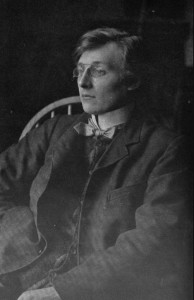
Have you ever noticed the Gordon Craig Theatre when travelling through Stevenage station and wondered who Gordon Craig was? I did and after a quick search on my phone it was soon apparent that this was a figure with an interesting and complex life worth writing about. Born in Stevenage (hence the theatre being named after him), Gordon Craig (1872-1966) was the son of the famous actress Ellen Terry, and as a young man he too was an actor alongside his mother in Henry Irving’s company. Much of his later work related to the theatre – stage designs, directing and writing widely on the theatre – but he also produced woodcuts and bookplates. This blog post will explore some aspects of his life and work using the UL’s rich collections. Continue reading “Who was Gordon Craig?”






